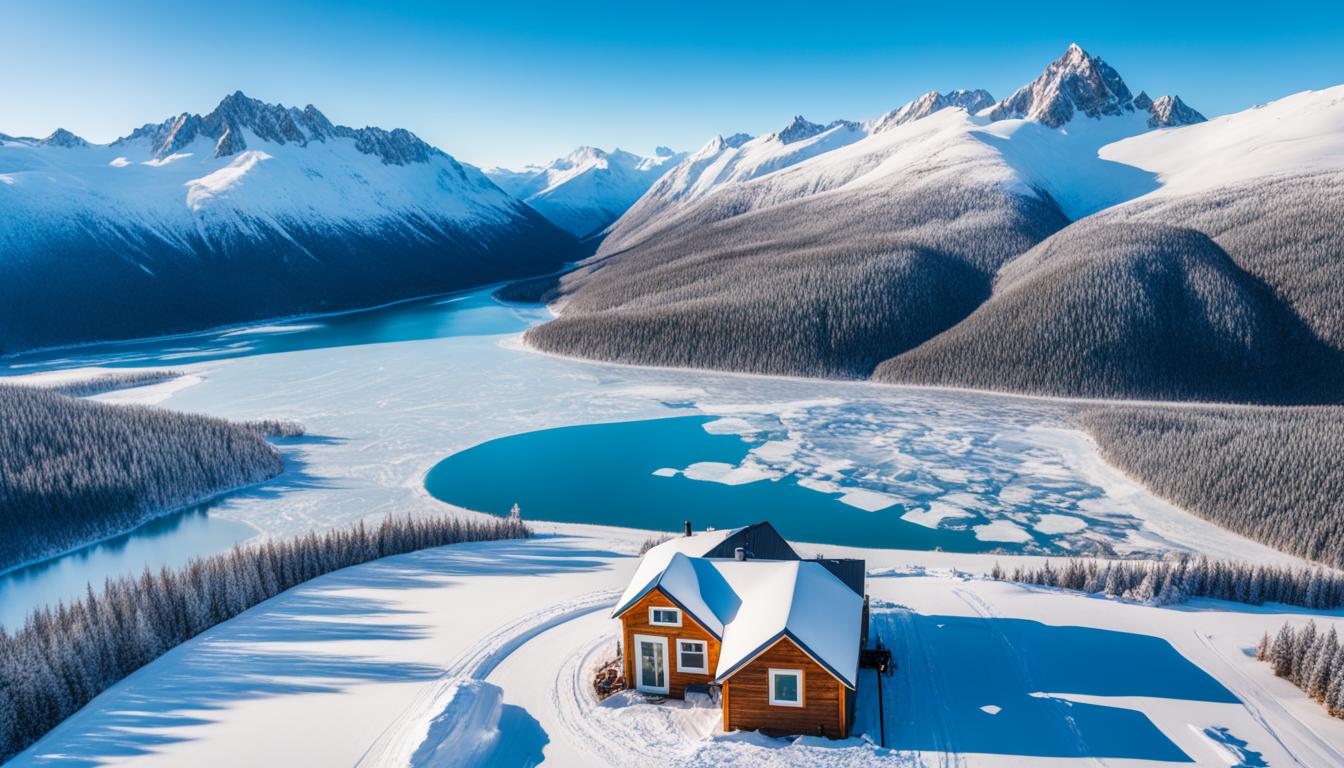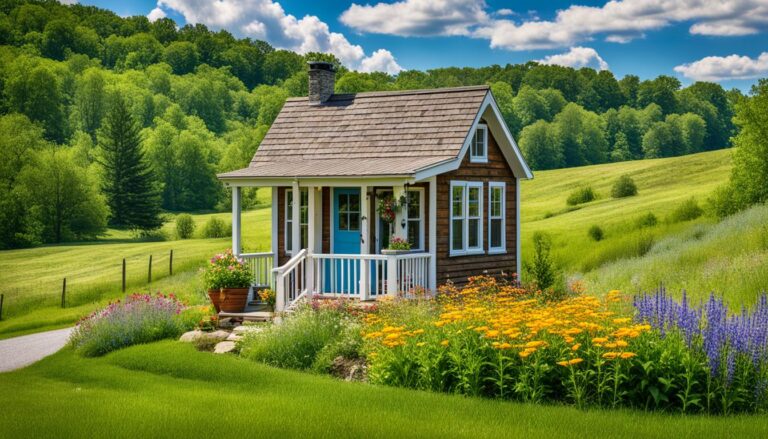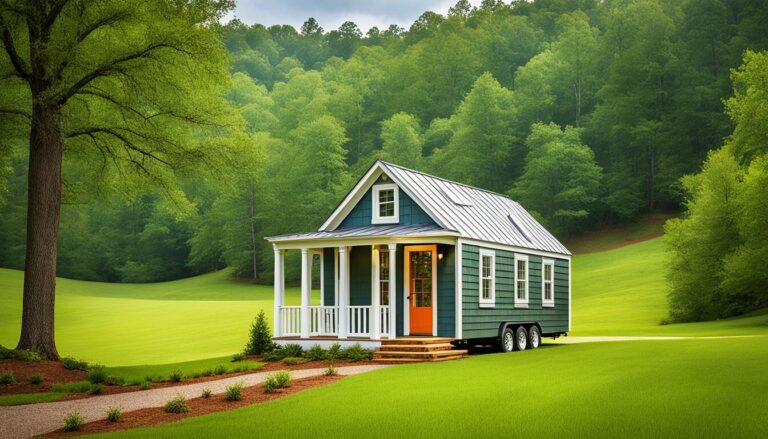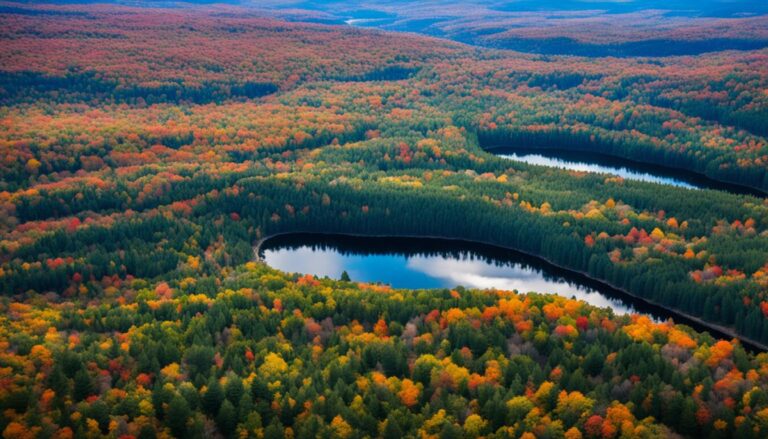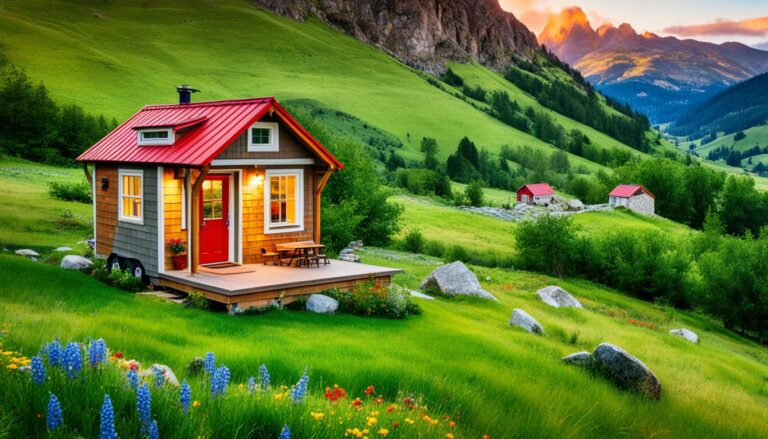Tiny House Placements in Alaska – Find Spots in 2024!
Have you ever wondered where you can put a tiny house in Alaska? Are you curious about the best places for tiny houses in this vast and diverse state? As the tiny house movement continues to grow, so does the interest in finding suitable locations to build or park these compact dwellings.
Alaska offers a unique setting for tiny house enthusiasts, with its breathtaking landscapes and sustainable living opportunities. However, navigating the rules and regulations can be challenging, as they vary by region.
If you’re considering joining the tiny house movement in Alaska, this article will guide you through the process of finding the perfect spot for your dream home. From understanding the regulations for tiny houses on foundations and on wheels to discovering existing tiny house communities, we’ve got you covered.
Join us as we explore the opportunities and challenges of tiny house living in Alaska, and uncover the best places to put a tiny house in this captivating state. Get ready to start your journey towards a simpler and more sustainable lifestyle!
Key Takeaways:
- Research and contact local authorities to understand the specific laws and ordinances for tiny houses in Alaska.
- Tiny houses on foundations are permitted in Alaska, under the International Residential Code (IRC) Appendix Q.
- Tiny houses on wheels, also known as RVs, are allowed in certain areas of Alaska, with varying regulations.
- Consider joining a tiny house community in Alaska for a sense of community and sustainable living.
- Work with certified builders to ensure compliance with building codes and safety standards when constructing a tiny house in Alaska.
Tiny Houses on Foundations in Alaska
When it comes to building a tiny house in Alaska, knowing the regulations is crucial. Tiny houses on foundations are permitted in Alaska under the International Residential Code (IRC) Appendix Q, which provides specific guidelines for construction and placement.
The IRC Appendix Q allows for a maximum floor space of 400 square feet for the tiny house, excluding lofts. Livable areas must have a minimum ceiling height of 6 feet 8 inches, ensuring comfortable living spaces. Additionally, hallways should be at least 36 inches wide to provide adequate passage within the tiny house.
Lofts, a common feature in tiny houses, must have a minimum floor space of 35 square feet, and they cannot be smaller than 5 feet in any direction. Stairways leading to lofts should be at least 17 inches wide and meet safety standards to ensure easy and secure access.
Building permits and adherence to local building codes are necessary for the legal placement and occupation of tiny houses on foundations in Alaska.
If you’re planning to build a tiny house in Alaska, it’s important to consult with local authorities and obtain the necessary permits to ensure compliance with building regulations. By following the IRC Appendix Q guidelines and obtaining the required permits, you can build a tiny house on a foundation that meets the legal requirements in Alaska.
How to Find Land for a Tiny House in Alaska
Finding land for your tiny house in Alaska can be an exciting but challenging task. Here are a few tips to help you in your search:
- Research Zoning Laws: Check the zoning regulations in the area you’re interested in to find out if they allow tiny houses on foundations. Some areas may have specific zoning restrictions or requirements for tiny houses.
- Contact Local Realtors: Reach out to local realtors who specialize in land sales. They may have information about available land parcels suitable for tiny houses.
- Explore Online Listings: Websites like Zillow, Trulia, and Realtor.com can be valuable resources for finding land listings in Alaska. Use filters to search for properties that meet your specific criteria.
- Connect with Tiny House Communities: Join online communities or forums dedicated to tiny house living in Alaska. Members may have insights or recommendations on available land or share their own experiences in finding suitable land.
- Consider Rural Areas: Rural areas often have more relaxed zoning restrictions and larger plots of land available. Research areas outside major cities to increase your chances of finding land for your tiny house.
Remember to conduct thorough research and due diligence before finalizing any land purchase. It’s crucial to ensure that the land you choose is suitable for building a tiny house and complies with local regulations.
By following these steps and working within the guidelines of the IRC Appendix Q, you can find the perfect piece of land in Alaska to build your dream tiny house.
Stay tuned for the next section, where we’ll explore tiny house living in Alaska and the regulations surrounding tiny houses on wheels.
Tiny Houses on Wheels in Alaska
Tiny houses on wheels, also known as RVs, are a viable option for those looking to embrace tiny house living in Alaska. However, it’s important to be aware of the specific zoning laws and regulations in the desired area before parking or living in a tiny house on wheels. Each city and county in Alaska may have its own rules regarding the placement and use of these mobile dwellings. For instance, in Anchorage, tiny homes on wheels are only allowed in R-5 zones, while other areas may have more lenient regulations with conditional use permission.
Despite the varying regulations, tiny house communities are emerging as a popular choice for tiny house enthusiasts in Alaska. These communities offer a sense of camaraderie and sustainable living options for individuals looking to downsize and simplify their lives. By joining a tiny house community, residents can enjoy the benefits of shared resources, such as communal spaces, gardens, and amenities, fostering a tight-knit and supportive environment.
When considering tiny house living in Alaska, it’s crucial to research and understand the local zoning laws, regulations, and any restrictions on tiny houses on wheels. By ensuring compliance with the specific guidelines of each area, individuals can enjoy the flexibility and mobility that come with tiny house living. Whether it’s parking in designated R-5 zones or becoming part of a thriving tiny house community, Alaska offers a range of opportunities for those seeking the freedom and simplicity of tiny house living.
Building Codes and Safety Standards for Tiny Houses in Alaska
Tiny houses in Alaska, whether on foundations or on wheels, must comply with building codes and safety standards to ensure the safety and legality of these dwellings. When building tiny houses on foundations, it is crucial to adhere to the IRC Appendix Q standards. These standards specify requirements for various aspects, including floor space, ceiling height, and loft dimensions.
Alaska’s building codes for tiny houses on foundations include a maximum floor space of 400 square feet, excluding lofts. The minimum ceiling height in livable areas should be 6 feet 8 inches, ensuring ample headroom for occupants. Lofts, common in tiny houses, must have a minimum floor space of 35 square feet and cannot be smaller than 5 feet in any direction. Stairways leading to lofts should be at least 17 inches wide and comply with safety standards to prevent accidents.
“Closed-cell spray foam insulation is often recommended for superior insulation and energy efficiency, as it provides an effective barrier against extreme Alaskan temperatures.”
When it comes to tiny houses on wheels, they must adhere to the Recreational Vehicle Industry Association (RVIA) standards and Alaska’s specific laws for RVs. These standards ensure the structural integrity and safety of tiny houses on wheels. Working with certified builders who understand and follow these building codes guarantees quality craftsmanship and adherence to safety standards.
“Working with certified builders and following building codes ensures the safety and legality of tiny houses in Alaska.”
Alaska’s building codes aim to protect the well-being of tiny house residents by establishing proper safety measures. Adhering to these codes not only ensures compliance with the law but also promotes the long-term durability and safety of the structure. Certified builders have the expertise and knowledge to construct tiny houses that meet or exceed these standards, providing peace of mind to occupants.
Tiny House Communities in Alaska
Tiny house communities are gaining popularity in Alaska as an affordable and sustainable housing option. These communities provide a unique and close-knit living experience for tiny house enthusiasts in Alaska.
Tamarack Knoll
Tamarack Knoll is a rural cohousing community located in Alaska. The community features privately owned tiny homes with shared facilities, such as bathrooms and a community kitchen. Tamarack Knoll offers a serene and sustainable living environment, where residents can connect with nature and form meaningful relationships with their neighbors.
Tongass Tiny Home Village
Tongass Tiny Home Village is another emerging community located in the Alaskan rainforest. This community offers various types of tiny homes, allowing residents to choose a style that suits their preferences and needs. Tongass Tiny Home Village also provides amenities like a dog park and community garden, promoting a sense of community and fostering a sustainable lifestyle.
Whether you’re seeking tranquility in a rural setting or looking to immerse yourself in the beauty of the Alaskan rainforest, these tiny house communities offer an affordable and sustainable way of living in Alaska.
Tiny Home Builders in Alaska
When it comes to building your dream tiny home in Alaska, you’ll want to work with reputable builders who understand the unique challenges and requirements of the state. Luckily, there are several trusted names in the industry who specialize in constructing top-quality tiny houses.
Great Lakes Tiny Homes: Great Lakes Tiny Homes is an RV Industry Association (RVIA) builder that delivers nationwide. Their extensive experience ensures compliance with building, safety, and regulatory guidelines for compact residences. Whether you’re looking for a cozy cabin-style tiny home or a modern and sleek design, Great Lakes Tiny Homes offers a variety of customizable options to suit your preferences and budget.
Stitt Construction: Stitt Construction is a premier tiny home builder in Alaska, known for their exceptional craftsmanship and attention to detail. With a focus on custom designs, they work closely with clients to create unique and personalized tiny homes that perfectly match their vision. Stitt Construction also prioritizes durability, building homes that can withstand Alaska’s harsh weather conditions and provide comfort year-round.
Both Great Lakes Tiny Homes and Stitt Construction are committed to delivering high-quality tiny homes that not only meet your needs but exceed your expectations. They are knowledgeable about the specific requirements and regulations in Alaska, ensuring that your tiny home is built to code and meets the necessary safety standards.
With these trusted builders, you can have peace of mind knowing that your tiny home will be constructed with care and precision. They offer options for customization, allowing you to create a space that reflects your style and lifestyle. Whether you’re dreaming of a cozy retreat in the mountains or a beachside oasis, Great Lakes Tiny Homes and Stitt Construction can deliver your dream tiny home to your desired location in Alaska.
Don’t settle for anything less than the best when it comes to building your tiny home. Choose reputable builders like Great Lakes Tiny Homes and Stitt Construction to ensure that your tiny home is built to the highest standards of quality, craftsmanship, and compliance.
Advantages of Working with Certified Builders
When it comes to building a tiny house in Alaska, working with certified builders, such as Great Lakes Tiny Homes and Stitt Construction, can offer numerous advantages. These certified builders prioritize quality craftsmanship, compliance with building codes, and the use of top-quality materials.
Certified builders ensure that every aspect of the construction process meets the highest manufacturing standards. From the foundation to the roof, every detail is meticulously crafted with precision and care. The result is a tiny house that not only looks beautiful but also stands the test of time.
“Working with certified builders provides peace of mind. You can trust that the tiny home they construct will meet all safety, durability, and quality requirements. They have the knowledge and expertise to navigate the complex world of building codes and ensure compliance with the specific regulations in Alaska.”
Building codes play a crucial role in ensuring the safety and structural integrity of a tiny house. Certified builders are well-versed in these codes and adhere to them throughout the construction process. This means that your tiny house will be built to code, giving you confidence in its safety and compliance with regulations.
Another advantage of working with certified builders is their streamlined access to financing options and insurance coverage. They have established relationships with lenders and insurance providers, making it easier for you to secure the necessary funds and protect your investment.
By working with certified builders, you can avoid potential pitfalls and challenges that may arise during the construction of your tiny house. Their experience and expertise in the field ensure that the build is smooth and efficient, saving you time, money, and stress along the way.
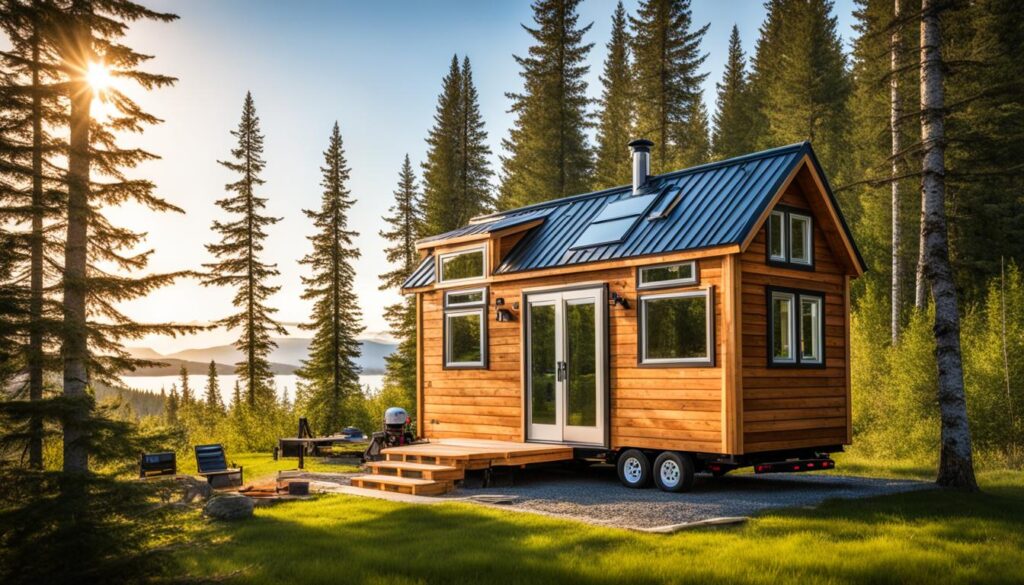
Whether you’re planning to build a tiny house on a foundation or on wheels, partnering with certified builders is a wise choice. Their commitment to quality craftsmanship, compliance with building codes, and attention to detail will result in a tiny house that exceeds your expectations.
Take advantage of the expertise and knowledge that certified builders bring to the table. Enjoy the journey of building your dream tiny house, knowing that you’re in the hands of professionals who prioritize your satisfaction and the long-term success of your tiny house project.
Making a Tiny House Your Permanent Residence in Alaska
Alaska offers an opportunity for individuals to make a tiny house their permanent residence, provided they comply with local rules and regulations. Before settling on a location, it is crucial to consult with local authorities and zoning officials to ensure adherence to codes and regulations. This may involve obtaining any necessary permits and undergoing inspections.
It’s important to note that certain areas might have restrictions on building tiny houses in backyards, while others may have specific requirements that must be met. Understanding the rules and regulations that apply to the specific area where you plan to live in a tiny house is essential to ensure a successful and legal living experience in Alaska.
Consulting with local authorities and understanding the local regulations will help ensure a smooth transition into tiny house living in Alaska. By following the rules and complying with regulations, you can transform your tiny house into a cozy and permanent residence in this beautiful state.
Local Rules and Regulations for Tiny Houses
When it comes to tiny houses, local rules and regulations play a significant role in determining where and how you can live. Each city and county in Alaska may have its own set of regulations that govern the construction, placement, and occupancy of tiny houses. It is essential to familiarize yourself with these rules before embarking on your tiny house journey.
Some areas may impose restrictions on the size or location of tiny houses, while others may have specific zoning regulations or classification criteria for movable tiny homes. By understanding and complying with these regulations, you can ensure the legality and safety of living in a tiny house in Alaska.
Consulting Local Authorities
Consulting with local authorities, such as zoning officials and building departments, is a crucial step in making a tiny house your permanent residence in Alaska. They will provide guidance on the specific rules and regulations that apply to your desired location. By seeking professional advice, you can navigate the complexities of local regulations and ensure that your tiny house complies with all the necessary requirements.
Inspections and Permits
In order to make a tiny house your permanent residence in Alaska, you may be required to obtain permits and undergo inspections. This ensures that your tiny house meets the necessary safety and building standards set by local authorities. The specific requirements for permits and inspections may vary depending on the location and type of tiny house you have.
It is important to understand that compliance with local regulations, obtaining permits, and passing inspections are vital steps towards legally establishing your tiny house as a permanent residence in Alaska.
Summary
Making a tiny house your permanent residence in Alaska is possible, but it is essential to navigate the local rules and regulations. By consulting with local authorities, understanding the regulations that apply to your desired location, and obtaining the necessary permits and inspections, you can enjoy the experience of living in a tiny house while complying with the laws of the land.
Tiny House Building Codes in Alaska
Alaska has adopted the IRC Appendix Q as its standard for tiny houses on foundations, making it a legal and viable option for tiny house living. The IRC Appendix Q relaxes various requirements in the International Residential Code, allowing for smaller floor spaces and lofts, lower ceiling heights, and provisions for stairs and ladders in small spaces. While the maximum size for a tiny house in Alaska is 400 square feet, specific local regulations based on the IRC Appendix Q may determine minimum size requirements. It’s important to consult the IRC Appendix Q and local building codes for precise details and requirements when building a tiny house in Alaska.
Alaska’s tiny house building codes, codified in the IRC Appendix Q, provide guidelines that enable the construction of small dwellings tailored to the unique needs of tiny house enthusiasts. By relaxing certain regulations, such as square footage and ceiling height, the IRC Appendix Q embraces the concept of compact living. Stairs and ladders are permitted in small spaces, facilitating access to lofts and maximizing the use of vertical space.
The adoption of the IRC Appendix Q by Alaska reflects the state’s recognition of tiny houses as a viable housing solution. While the maximum size for a tiny house in Alaska is capped at 400 square feet, local regulations based on the IRC Appendix Q may impose additional requirements, including minimum size specifications. Consequently, prospective tiny house builders and occupants should consult the IRC Appendix Q and familiarize themselves with local building codes to ensure compliance.
Tiny House Regulations in Alaska
When it comes to tiny houses, Alaska has specific regulations in place to ensure the safety and compliance of these unique dwellings. These regulations cover various aspects, including floor space, ceiling height, and safety features.
Alaska has adopted the IRC Appendix Q for tiny houses on foundations, which allows for smaller dwellings that meet the necessary safety and quality standards. This means that if you are planning to build a tiny house on a foundation in Alaska, you will need to adhere to the guidelines outlined in the IRC Appendix Q.
For those considering tiny houses on wheels, the regulations may vary depending on the location. Some areas have specific classifications for movable tiny homes, so it’s crucial to research and understand the regulations that apply to your desired location in Alaska.
To ensure that your tiny house in Alaska is legal and safe, it is essential to comprehend and comply with these regulations. By doing so, you can enjoy the benefits of tiny house living while adhering to the laws of the state.
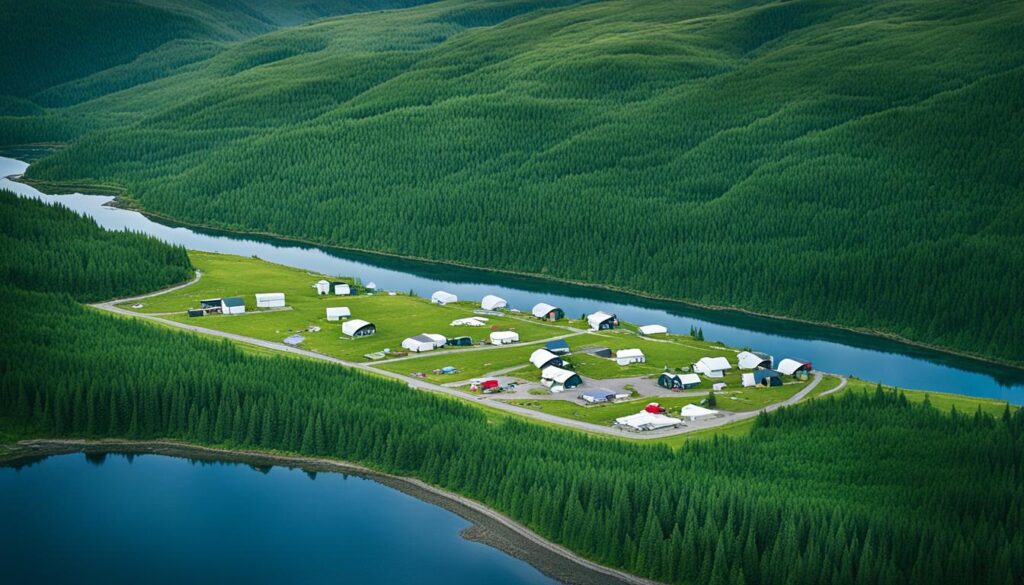
For more information on Alaska’s tiny house regulations, you can visit the HUD User website.
Conclusion
Tiny house living in Alaska offers a unique and sustainable lifestyle for those seeking a simpler way of life. With diverse environments and varying regulations, it is crucial to research and understand the specific rules and options for tiny house placement in Alaska.
Alaska permits tiny houses on foundations and on wheels, each with their own guidelines and regulations. However, compliance with building codes and safety standards is essential to ensure the legality and safety of tiny houses in the state.
By working with certified builders and adhering to local regulations, individuals can enjoy the benefits of tiny house living amidst the beautiful and diverse landscape of Alaska. Whether it’s choosing to build a tiny house on a foundation or opting for a mobile tiny house, there are options available for everyone.
For more information on tiny house living in Alaska, including regulations and tips for placement, you can visit this source. Explore the possibilities and make your tiny house dreams a reality in the Last Frontier!

